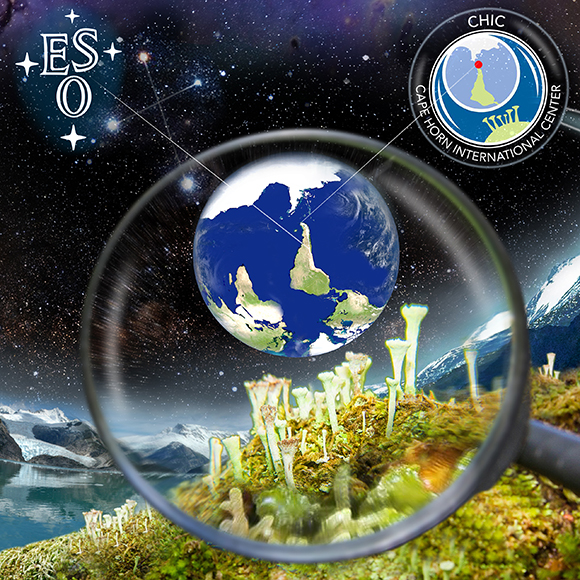New Spanish Translation of the Virtual Exhibition: “De lupas a telescopios”
12.12.2023
We are excited to announce the release of the Spanish version of our latest virtual exhibition “De lupas a telescopios: Explorando el microcosmos y el macrocosmos en los laboratorios bioculturales de Chile.”
The exhibition takes visitors on a journey to the southern and northern ends of Chile in order to dive into the worlds of some of the smallest organisms on Earth—mosses, lichens, and liverworts—and some of the largest cosmic entities—stars, black holes, and other planets.
About the Exhibition:
Since the mid-twentieth century, astronomical observatories have been established in northern Chile to explore outer space. Since the beginning of the twenty-first century, the Cape Horn International Center (CHIC) has been established at the southern end of Chile to survey the responses of subantarctic biodiversity to climate change. Led by the University of Magallanes in Chile and the University of North Texas in the United States, in collaboration with other research and government institutions, CHIC has developed a long-term biocultural research, education, and conservation program to understand, value, and protect biological and cultural diversity. With the support of the government of the Region de Magallanes y Antártica Chilena, in 2022 CHIC inaugurated—a state-of-the-art research and education facility, located in Puerto Williams, capital city of the Provincia Antártica Chilena.
This virtual exhibition presents for the first time the complementarity of the astronomical and biocultural research conducted at the extreme ends of Chile. The world’s clearest skies above the Atacama Desert and the planet’s cleanest waters and ecosystems in the Cape Horn Biosphere Reserve (CHBR) offer unique opportunities for exploring the cosmos, from supernovae and constellations to tiny organisms. The examination of biophysical dimensions discloses surprising similarities between structures and patterns of galaxies and rocks, rivers, and organisms, including humans on Earth. This research invites us to appreciate the beauty of the cosmos and ponder our life habits in order to foster responsible ways of coexisting with diverse human and other-than-human inhabitants.
“De lupas a telescopios: Explorando el microcosmos y el macrocosmos en los laboratorios bioculturales de Chile”: An exhibition by Ricardo Rozzi, Carolina Castro Jorquera, Luis Chavarría, Shaun Russell, Bernard Goffinet, Miguel Garcia, Kelli Moses, Tamara Contador, Francisca Massardo, Bruno Leibundgut, Teresa Paneque Carreño, Alain Smette, Itziar de Gregorio-Monsalvo, and Alejandra Tauro. Access it here: https://www.environmentandsociety.org/node/9663.


